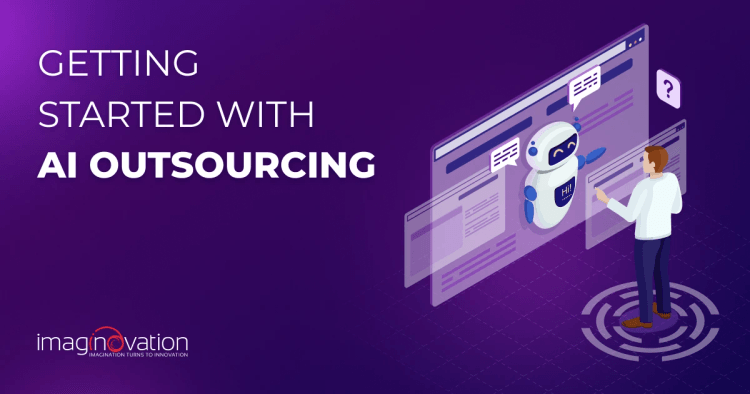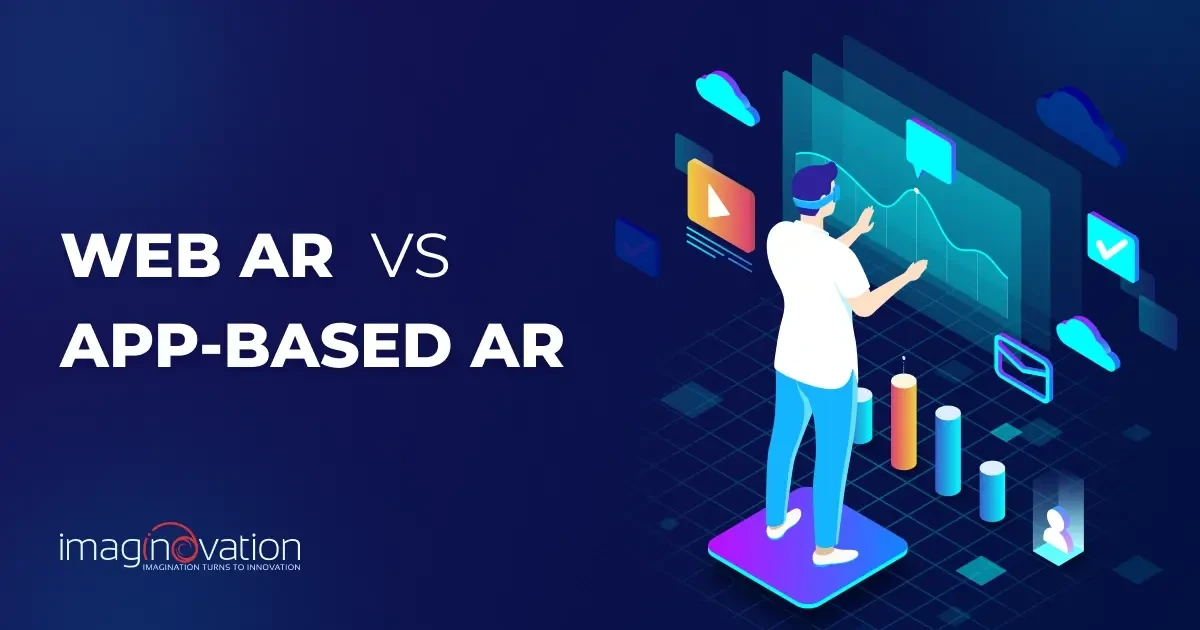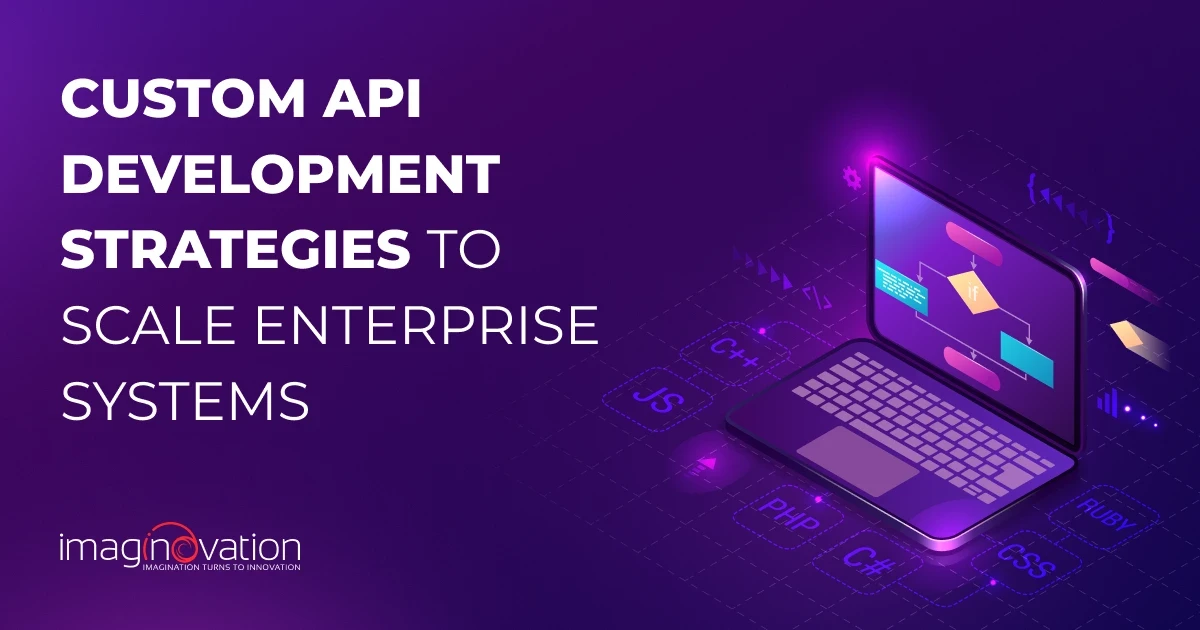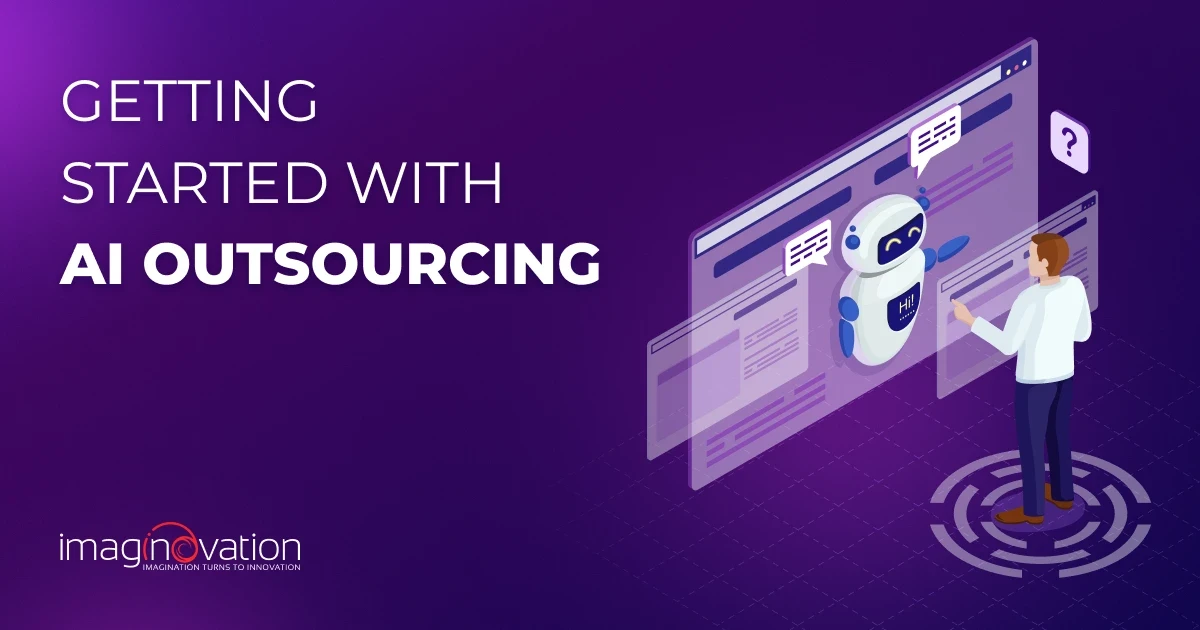Did you know that over 64% of businesses now outsource at least part of their AI development?
It’s easy to see why. Building AI in-house can drain budgets and overwhelm teams that don’t have the technical depth to handle complex models or integrations.
Companies start with the excitement of training models, connecting APIs, and hiring specialists, only to end up with expensive proofs of concept that never scale. The problem isn’t the technology. It’s the process.
When we started helping companies outsource AI development, I realized most failures didn’t come from bad code; they came from unclear strategies and blind trust.
But, when done right, it gives you access to specialized talent and the ability to focus on running the business. The thing, though, is that AI outsourcing only works when you approach it strategically from the start.
In this blog, I’ll show you how to get AI outsourcing right from day one, choosing the right model, setting up guardrails for success, and avoiding the mistakes that derail so many first-time projects.
Benefits of Outsourcing Your AI Project
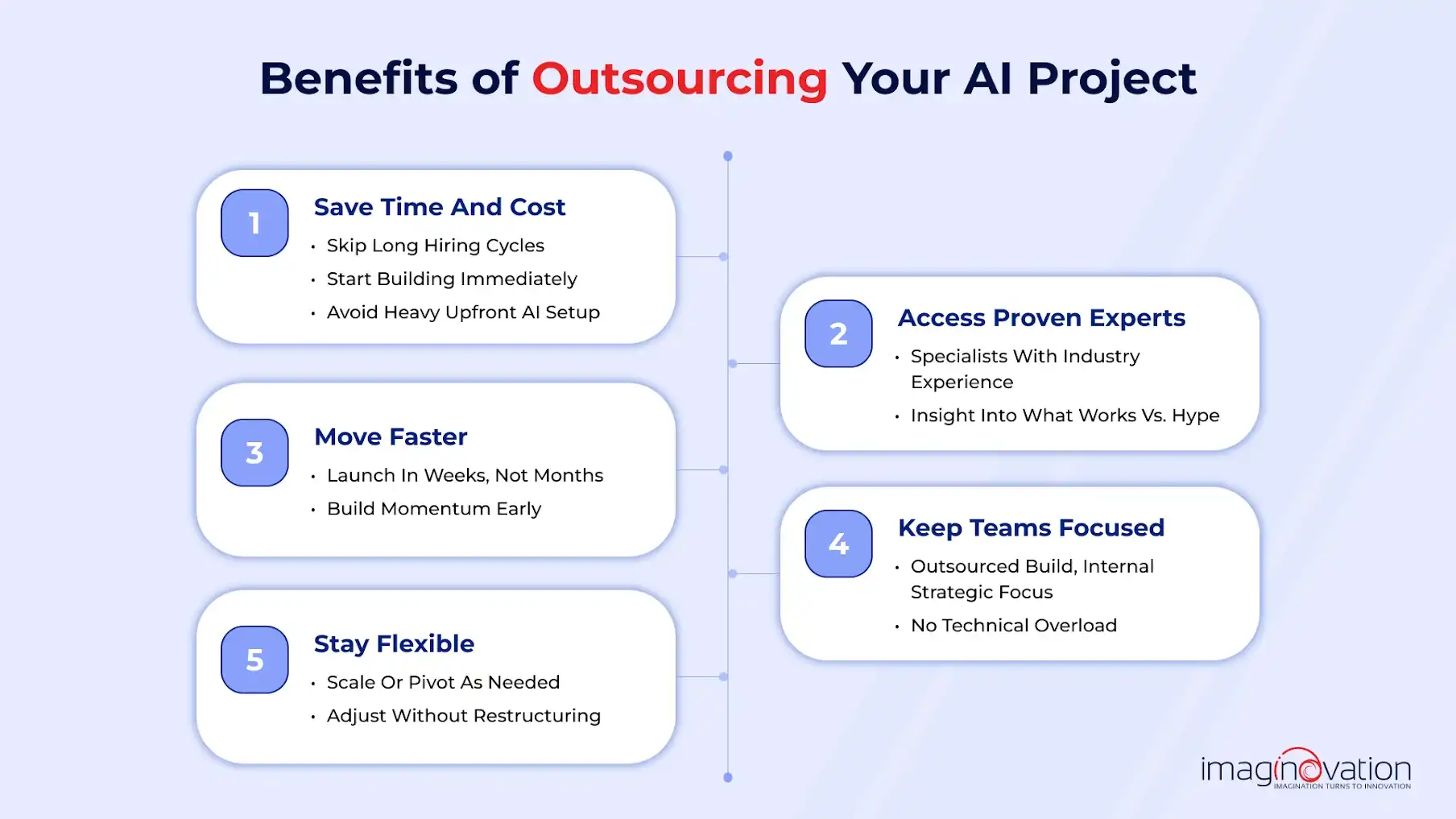
AI is powerful and changing faster than most teams can keep up with. Outsourcing is how smart companies cut through the noise and start seeing results without burning a year hiring specialists or building systems from scratch.
It’s not about handing work off. It’s about bringing expertise in.
1. Save Big on Time and Cost
Hiring an in-house AI team means competing for scarce talent and burning months before you see results. Outsourcing lets you start building immediately. You get a ready-made team that’s already done the hard parts of designing, training, and deploying AI solutions at a fraction of the time and cost.
2. Get Access to People Who’ve Been There
AI isn’t a one-size-fits-all game. What works for a healthcare app won’t fit an agriculture platform. Outsourcing connects you with specialists who know the terrain. They’ve solved similar problems, tuned models for real business use, and can tell you what’s worth doing and what’s just hype.
3. Move Faster and Smarter
Speed wins in AI. A good outsourcing partner helps you go from “we should try this” to “it’s live and working” in weeks, not months. That early momentum matters. It builds buy-in across teams and gives you data to refine before making big commitments.
4. Keep Your Team Focused Where It Counts
While your partner handles the AI build, your internal team stays focused on strategy, customers, and growth. You stay in control of direction, but without the late-night debugging sessions.
5. Stay Flexible for Whatever Comes Next
Your needs will change as technology evolves. Outsourcing lets you scale up, slow down, or pivot without the burden of hiring or restructuring your team.
When done right, outsourcing doesn’t distance you from innovation. It puts you closer to it, faster, cheaper, and with fewer missteps along the way.
Common Challenges and How to Overcome Them
I’ve seen it many times that a company gets excited about AI, signs with a vendor, and a few months later, they’re wondering where things went wrong. The model doesn’t fit, the data isn’t ready, or the integration feels like duct tape holding systems together.
It’s not that the technology failed, but the process did. AI outsourcing works best when there’s clarity, structure, and real communication between both sides. Without that, even the smartest project can fall apart before it delivers value.
The good news is that most of these challenges are preventable. Once you know what to look out for, you can build a smoother partnership and see results faster.
Let’s break down the biggest hurdles companies face when outsourcing AI and how to overcome them before they cost you time, money, or momentum.
1. Integration Issues with Legacy Systems and Workflows
Integrating AI into older systems is one of the biggest stumbling blocks I see, and honestly, it’s where most teams underestimate the effort required. You can’t just plug AI into a legacy setup and expect it to run smoothly. Models need clean data, modern APIs, and consistent feedback loops to work well.
Most companies think the challenge is AI itself. It’s not! It’s making AI talk to the tools they already use.
That’s where experienced partners make all the difference. A good AI team knows how to align them with your existing processes. At Imaginovation, we’ve worked with companies whose systems were older than some of their employees and still found ways to modernize them without a full rebuild.
The key is starting small. Begin with one workflow that’s slow or manual, integrate AI there, and prove value before scaling. Once the first system runs smoothly, expanding across departments becomes much easier.
2. Unpredictability of AI Outcomes and the Need for Monitoring
Even the smartest AI systems can surprise you and not always in good ways. I’ve seen perfectly designed models drift over time, start producing strange outputs, or make confident predictions that turn out completely wrong. That’s the nature of AI.
AI isn’t a set-it-and-forget-it solution. It’s like hiring a brilliant employee. You still have to train, review, and guide them as they learn. AI models evolve with the data they’re fed. If that data shifts because of market changes, new user behavior, or bad inputs, performance can degrade fast.
That’s why real-time monitoring is non-negotiable. Companies that succeed with AI outsourcing build systems that track model accuracy and flag anomalies before they become costly mistakes.
Here’s how we typically approach it with clients:
- Set up automated alerts for performance drops or unusual prediction patterns.
- Establish retraining cycles so models update alongside your business.
- Keep humans in the loop for review and validation, especially early on.
- Document every decision to ensure compliance and audit readiness.
Outsourcing means structuring collaboration the right way. When both teams (yours and your partner’s) see what the AI is doing and why, you move from reacting to leading.
3. Initial Data Preparation, Infrastructure Costs, and Scope Changes
I’ve seen this mistake derail more projects than any technical glitch ever could. Companies jump into AI outsourcing with excitement, only to realize halfway through that their data isn’t ready, or worse, that their scope keeps changing because they didn’t plan for it up front.
You can’t feed junk into AI and expect intelligence to come out. Most AI projects fail not because of poor modeling, but because the data underneath is incomplete, inconsistent, or just plain messy.
That’s why the first few weeks of any successful AI project aren’t about coding but about data readiness and clear definition. You have to know what data you have, what’s missing, and what “success” really looks like before you start.
Here’s how we help clients avoid the classic pitfalls:
- Audit your data early. Identify gaps, duplicates, and inconsistencies before handing anything to your outsourcing partner.
- Define clear scope boundaries. AI projects tend to change fast, but if every new idea becomes a new deliverable, timelines and costs spiral.
- Budget for infrastructure. Training and maintaining AI models takes serious computing power. Factor in those costs from day one.
- Use pilot projects as a learning curve. Start small, validate results, and scale only when you’ve built confidence in the system.
When data is clean and the scope is stable, the technical work flows naturally.
4. Data Privacy and Security Risks
When sensitive data moves across systems, vendors, and cloud platforms, every step becomes a potential risk point. That’s why security has to be part of the plan from day one. Companies must ensure their partners follow clear protocols for data storage, encryption, and access.
If there’s a specific security requirement, it has to be on the table from the start, not as a patch later.
That’s exactly how top-tier partnerships work. Transparency and documentation build trust long before code is written.
Here’s how successful outsourcing teams typically safeguard AI development:
- End-to-end encryption for all data transfers and model training environments.
- Strict access controls with role-based permissions and activity logs.
- Anonymization or masking of sensitive user data before sharing with vendors.
- Regular compliance audits against GDPR, HIPAA, or SOC2 frameworks.
- Hybrid deployment models that blend public and private AI infrastructure for tighter control.
At Imaginovation, this approach is standard. When client data can’t leave a secure environment, we often build hybrid AI systems, combining large model APIs like GPT with privately trained models that stay fully compliant. That balance between power and privacy keeps innovation safe and scalable.
5. Lack of Internal AI Literacy
I often tell clients that the more you learn about the technology, the wiser your decisions become. Understanding AI is about knowing where, when, and why to apply it. That’s what separates successful adopters from those who end up with shelfware.
Here’s how leaders can close that knowledge gap while outsourcing:
- Start small and learn by doing. Pilot one process, like automation or prediction, before scaling up.
- Ask your vendor to explain decisions. A good partner should be able to simplify complex logic without jargon.
- Document everything. Maintain transparency between business strategy and model behavior.
- Train internal teams early. Build AI literacy through workshops, shadowing, or cross-functional learning sessions.
AI outsourcing works best when it’s a collaboration, not a handoff. The more you understand what’s under the hood, the more confidently you can drive the project forward.
The AI Outsourcing Models: What Fits Your Business?
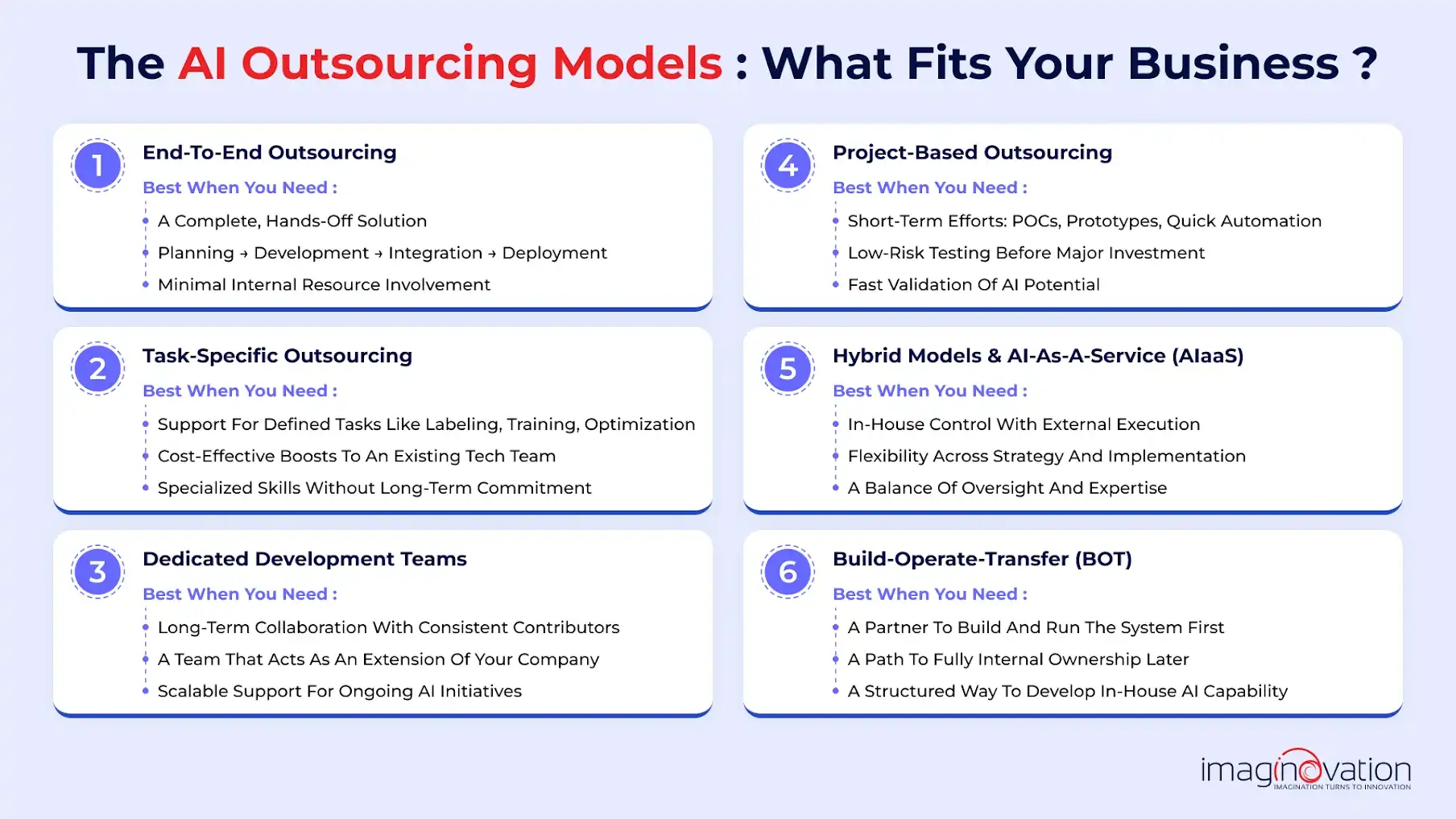
Choosing the right outsourcing model can define the success or failure of your AI initiative. Each business has different goals, resources, and levels of technical readiness, and the right structure ensures efficiency, control, and measurable results from day one.
Here’s a closer look at the main models companies use to outsource AI successfully:
1. End-to-End Outsourcing
A complete approach where the partner handles everything, from planning and model development to integration and deployment. It’s best for organizations that want a full-service experience with minimal internal resource allocation.
2. Task-Specific Outsourcing
Focused on defined segments of the project, such as data labeling, model training, or algorithm optimization. This approach is cost-effective for companies that have an internal tech team but need specialized support in certain areas.
3. Dedicated Development Teams
Ideal for long-term collaboration. These teams act as an extension of your organization, focusing solely on your projects. It’s a strong choice for scaling ongoing AI initiatives and maintaining consistency in development.
4. Project-Based Outsourcing
Designed for short-term needs such as proof-of-concept development, prototypes, or quick automation experiments. It provides a low-risk way to test AI’s potential without large upfront commitments.
5. Hybrid Models & AI-as-a-Service (AIaaS)
A flexible model that combines in-house strategy with external technical execution. It allows organizations to retain strategic oversight while outsourcing technical implementation to experienced AI partners.
6. Build-Operate-Transfer (BOT)
A structured model where the outsourcing partner builds and runs the AI system until the client’s internal team is ready to take over. It’s effective for companies planning to eventually develop in-house AI capabilities.
Each model offers unique advantages depending on your business maturity, internal expertise, and long-term goals. Selecting the right one ensures smoother collaboration, predictable outcomes, and sustainable AI growth.
Factors to Consider When Choosing a Vendor
The right AI outsourcing partner shapes outcomes. Choosing the wrong one, however, can lead to misaligned goals, wasted budgets, and delayed launches. The difference comes down to asking the right questions before signing any contract.
Here’s what to look for when evaluating a potential partner:
- Alignment with Business Goals and Technical Expertise: Your vendor should understand your business. Technical capability means little if it doesn’t map to your strategy, KPIs, and operational realities.
- Proven Portfolio and Industry Experience: Don’t just trust words. Ask to see something in production that’s actually being used.
- Strong Communication, Agility, and Cultural Fit: AI projects evolve fast. You need a partner who can adapt, communicate clearly, and collaborate like an extension of your internal team. Misalignment in communication or working culture can derail even the best technology.
- Security Practices and Compliance Standards: Data privacy and compliance must be non-negotiable. Ensure the vendor has clear protocols for encryption, data access, and audit trails, especially when dealing with sensitive information or regulated industries.
- Flexible Engagement Models: Every project has different needs. The best partners offer multiple models, hourly, fixed-price, or dedicated teams, so you can choose what fits your budget, timeline, and control requirements.
The strongest AI vendors don’t sell one-size-fits-all solutions. They listen, adapt, and build partnerships grounded in transparency, accountability, and measurable impact.
Best Practices for Success
I’ve seen AI outsourcing succeed, and I’ve seen it fail. The difference almost always comes down to clarity and involvement. The first step is to be clear on what you’re trying to achieve. “Improve efficiency” isn’t enough. You need measurable goals, faster response times, lower costs, and higher accuracy. Without that, you’ll never know if your project is working or just moving.
Then comes communication. I can’t stress this enough, but stay close to your partner. Regular check-ins and milestone reports build alignment. The best results happen when both sides operate like one team.
Before you build anything, make sure your partner follows solid data governance and compliance practices. Here’s something I tell every client: You don’t have to know everything about AI, but you should know enough to verify, not just trust.
That’s why I always recommend building internal knowledge as the project progresses. Documentation, demos, and training sessions make sure your team can maintain and scale what’s built.
Finally, don’t think of launch day as the finish line. AI systems evolve. They learn, drift, and need tuning. Measure performance, retrain models, and keep iterating. That’s how you turn a one-off project into a long-term advantage.
Common Pitfalls and How to Avoid Them
Here are the biggest pitfalls I see teams run into, and how to avoid them before they derail your project:
1. Misaligned Expectations and Vague Scope
Most failures start here. If you can’t describe what success looks like in plain language, your vendor can’t deliver it. Define outcomes, milestones, and “done” criteria clearly before the first line of code is written.
2. Overdependence on External Vendors
Outsourcing doesn’t mean outsourcing control. Keep your team involved, document every decision, and ensure knowledge transfer at every stage. A good partner builds your internal strength, not your dependency.
3. Poor Quality Assurance and Weak Feedback Loops
I’ve seen projects stall for months because no one set up a testing rhythm. Insist on continuous QA, regular demos, and transparent progress tracking. It keeps everyone honest and your AI model accurate.
4. Communication Gaps Due to Time Zones or Language
These don’t sound like dealbreakers until they are. Schedule overlapping hours, use shared documentation tools, and designate a single point of contact. Clarity kills confusion before it costs you money.
Outsourcing AI isn’t a gamble if you manage it with structure and awareness. The best projects succeed because teams stay aligned and informed, not because they got lucky.
Conclusion
The success of an AI project doesn’t hinge on algorithms alone. It depends on the clarity of your strategy and the quality of your partnerships. The right outsourcing model can help you move faster, innovate smarter, and control costs without losing visibility or trust in the process.
When you start with clear objectives and a partner who understands both your business and the technology, AI outsourcing stops being a gamble and becomes a growth strategy. It’s how modern businesses are scaling intelligence without overextending their teams or budgets.
At Imaginovation, we’ve helped companies go from “Where do we start?” to fully deployed AI systems that deliver measurable ROI. We help you build momentum.
If you’re planning to outsource your next AI project, start with a conversation. Let’s make sure you get it right from the start.
Ready to build an app, but not sure where to start?
We've got you covered. Click the button below to get started.

